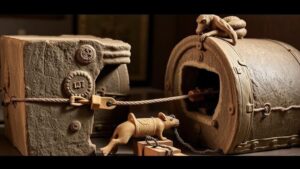Selling Pirate-Related Artifacts to Nautical History Enthusiasts
Selling Pirate-Related Artifacts to Nautical History Enthusiasts
The allure of pirate-related artifacts is a captivating niche within the broader market of nautical history. These items, which often evoke romanticized notions of adventure, treasure, and maritime lore, appeal to collectors, historians, and enthusiasts alike. Selling such artifacts effectively necessitates a nuanced understanding of both the historical context and the market dynamics. This article explores the essential factors involved in successfully selling pirate-related artifacts to the niche of nautical history enthusiasts.
The Appeal of Pirate Artifacts
Historically, pirates have fascinated the public, inspiring countless books, films, and even theme parks. According to a survey by the National Maritime Museum, approximately 40% of Americans express interest in pirate lore. This widespread enthusiasm creates a valuable market for sellers of pirate-related artifacts. Collectors often seek items such as
- Shipwreck treasures
- Pirate flags (Jolly Roger)
- Personal items believed to belong to famous pirates
- Map reproductions that purportedly lead to hidden treasures
These objects serve not only as historical artifacts but also as tangible connections to the romanticized narratives surrounding piracy.
Understanding Your Audience
Selling pirate artifacts requires an understanding of the specific demographics that constitute nautical history enthusiasts. Typically, these customers fall into various categories, such as:
- Serious collectors who may be driven by historical significance
- Casual fans looking for unique decor items for their homes
- Educational institutions and museums seeking to enhance their displays
Understanding the motivations of each group allows sellers to tailor their marketing strategies effectively. For example, serious collectors may value provenance and authenticity, while casual fans may prioritize aesthetic appeal and novelty.
Evaluating Authenticity and Value
One of the most critical aspects of selling pirate-related artifacts is establishing authenticity. market is rife with reproductions and fakes. To accurately evaluate an artifacts value, sellers can use several methods, including:
- Provenance documentation that traces the item’s historical ownership
- Expert appraisals from recognized professionals in maritime archaeology
- Material analysis to confirm the age and origin of the artifact
A case study exemplifies this point. When an auction house sold a purported pirate sword for over $10,000, they provided detailed provenance that traced its history back to a shipwreck in the Caribbean. This transparency helped potential buyers trust the authenticity and motivated them to purchase.
Marketing Strategies for Artifacts
Effective marketing strategies are essential for sellers in the pirate artifact market. Online platforms such as eBay and specialty sites like LiveAuctioneers or Heritage Auctions have transformed how artifacts are sold, providing broader access to diverse global audiences. Key strategies include:
- Utilizing high-quality photographs and detailed descriptions that highlight unique features
- Incorporating storytelling elements around the item’s history and significance
- Engaging with online communities and forums dedicated to maritime history or collector groups
For example, a seller who displayed a rare replica of Captain Kidd’s treasure map on social media, accompanied by a short video detailing its story, saw a 120% increase in interest compared to previous postings without such context.
Legal and Ethical Considerations
As with any collecting community, sellers must navigate the legal and ethical implications of their trade. Key considerations include:
- Compliance with international laws governing the sale of cultural artifacts
- Understanding the laws surrounding shipwreck salvage and ownership
- Ensuring that historical artifacts are not stolen or illegally obtained
Being aware of such regulations not only safeguards the seller but can also enhance their credibility in the market. A seller who can demonstrate ethical sourcing will build a stronger reputation, thereby attracting more discerning buyers.
Real-World Applications and Conclusion
The market for pirate-related artifacts is both a fascinating and profitable niche for those equipped with the right knowledge and strategies. Sellers can enhance their business operations by thoroughly understanding their audience, ensuring the authenticity of their artifacts, employing effective marketing techniques, and adhering to legal requirements. To wrap up, navigating this market requires a blend of historical knowledge, business acumen, and ethical consideration, ultimately leading to a rewarding venture for both sellers and buyers alike.
Whether you are a seasoned seller or a newcomer, these insights offer actionable takeaways for understanding and capitalizing on the enduring fascination with pirate lore and artifacts.


